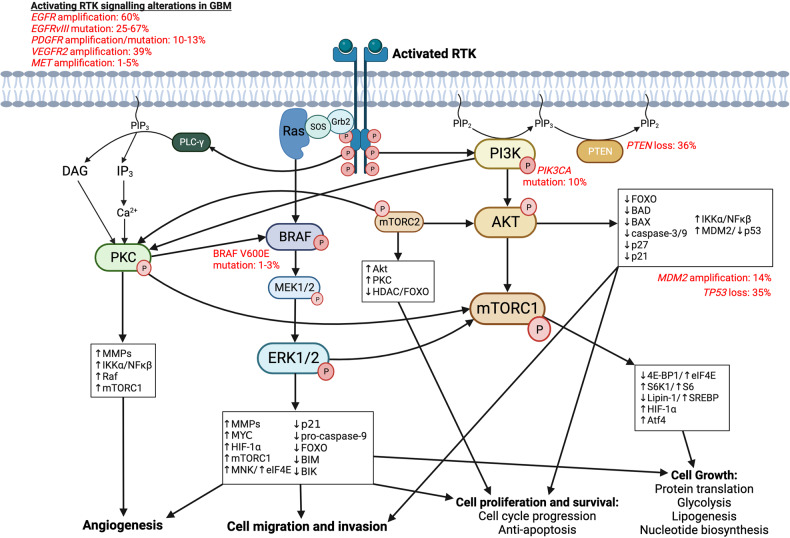Fig. 1.
RTK signalling pathways in glioblastoma. RTKs have been identified as activating oncogenes that promote glioblastoma tumourigenesis, including epidermal growth factor receptor (EGFR), platelet derived growth factor receptor (PDGFR), vascular endothelial growth factor receptor (VEGFR), fibroblast growth factor receptor (FGFR), and hepatocyte growth factor receptor (HGFR or c-Met). The main signalling cascades activated by any of the above RTKs include PI3K/AKT/mTOR and Ras/Raf/MEK/ERK. Activation of these cascades regulates proteins and transcription factors, such as HIF-1α, FOXO, and NFκβ, that promote cell and cycle progression, cell growth and survival, cell migration and invasion, and angiogenesis. Importantly, mTORC2 and PKC can act as overlapping relay signalling kinases. Independently mTORC2 and PKC can phosphorylate and regulate proteins required for tumourigenesis, however, they also play an important role in stimulating positive feedback loops within the PI3K/Akt/mTORC1 and Ras/Raf/MEK/ERK cascades. mTORC2 activates AKT, which can subsequently increase mTORC1 activity for promoting cell growth and metabolism. In addition, mTORC2 also activates PKC; downstream targets of PKC include mTORC1 and Raf, therefore, mTORC2 and PKC may dependently or independently contribute to sustained kinase signalling in glioblastoma cells. This crosstalk between pathways allows glioblastoma cells to easily overcome any blocks by targeted therapies, complicating our understanding of the clinical implications in glioblastoma treatment management and therapeutic resistance. Figure created with Biorender.com

